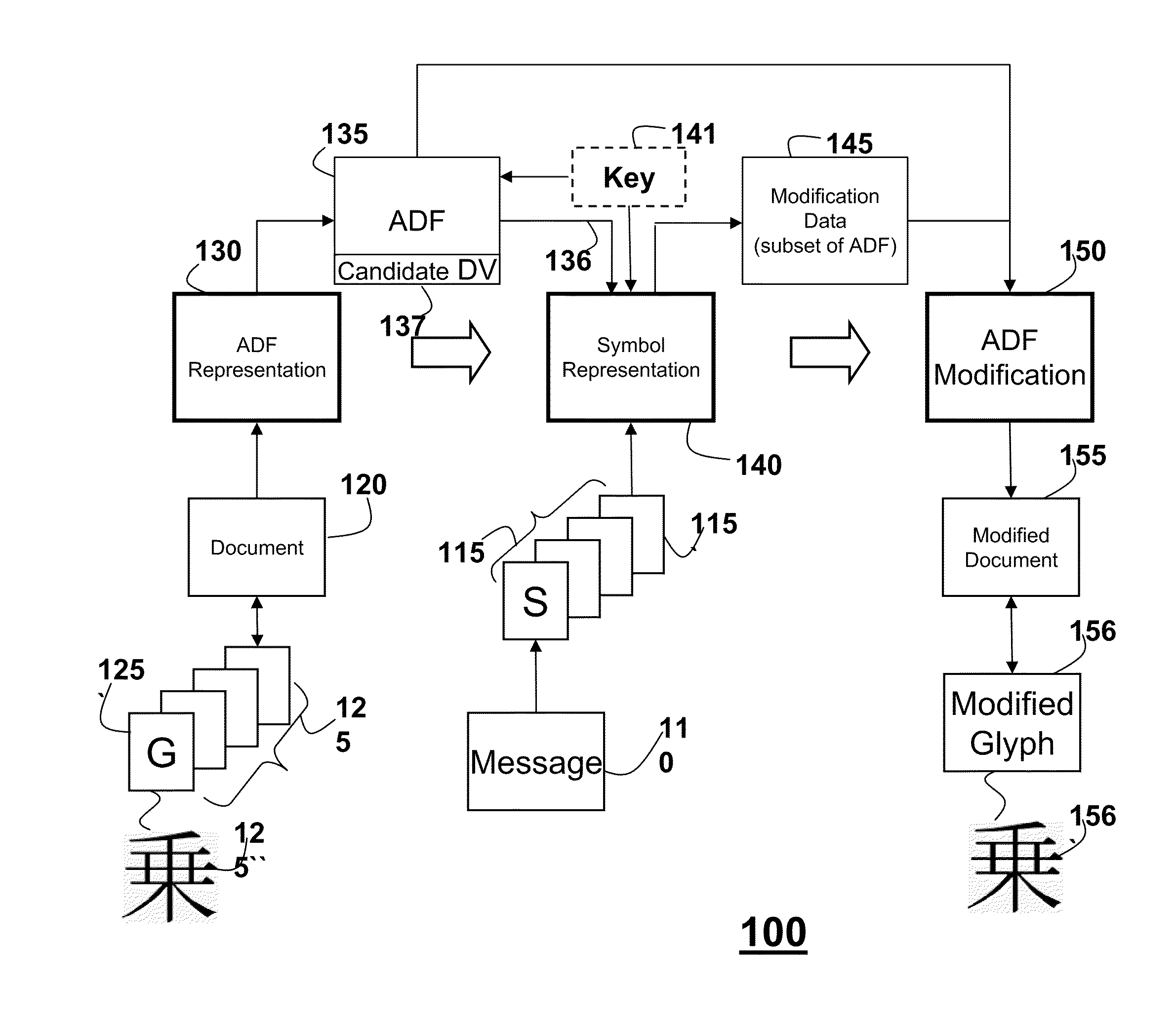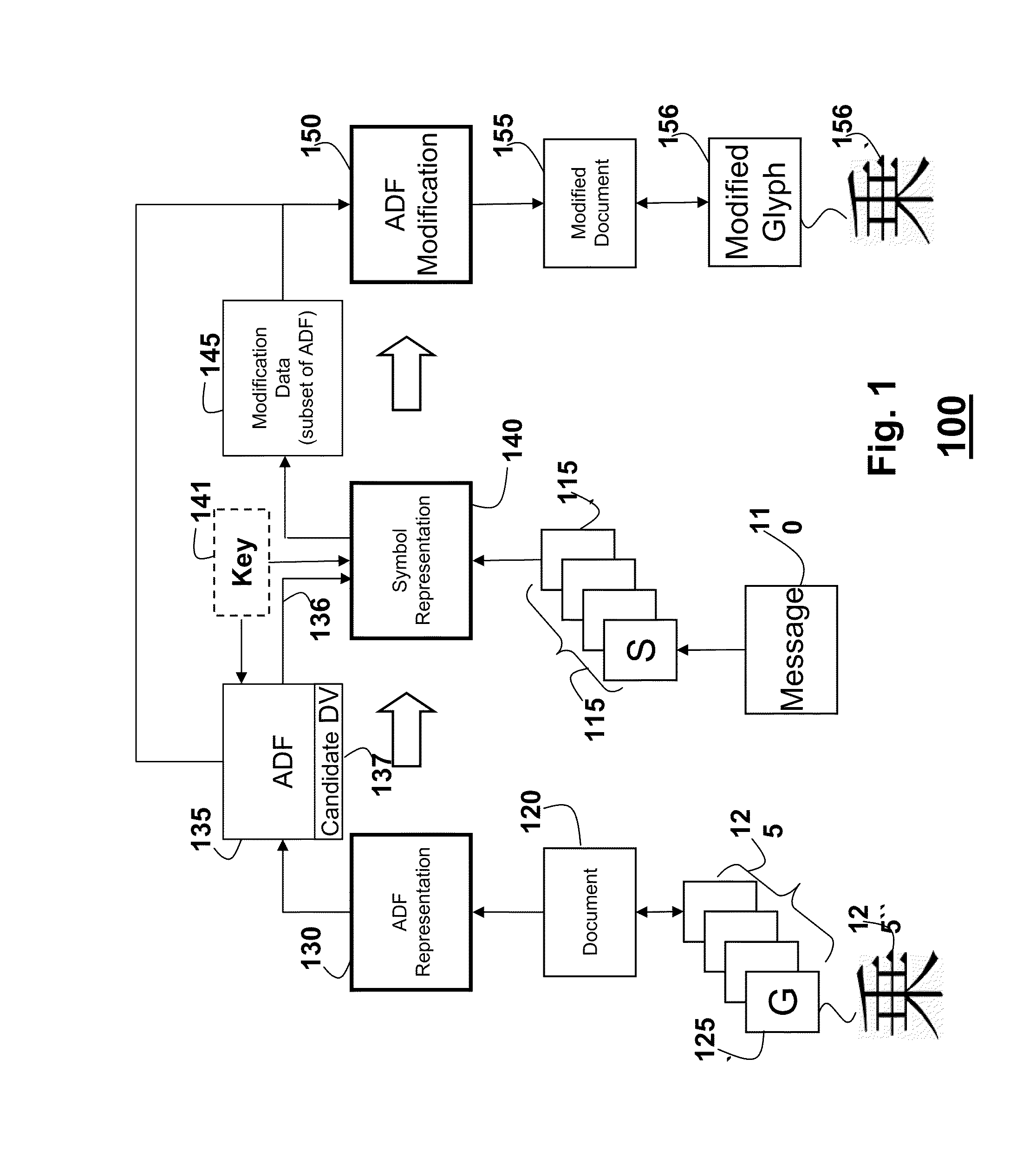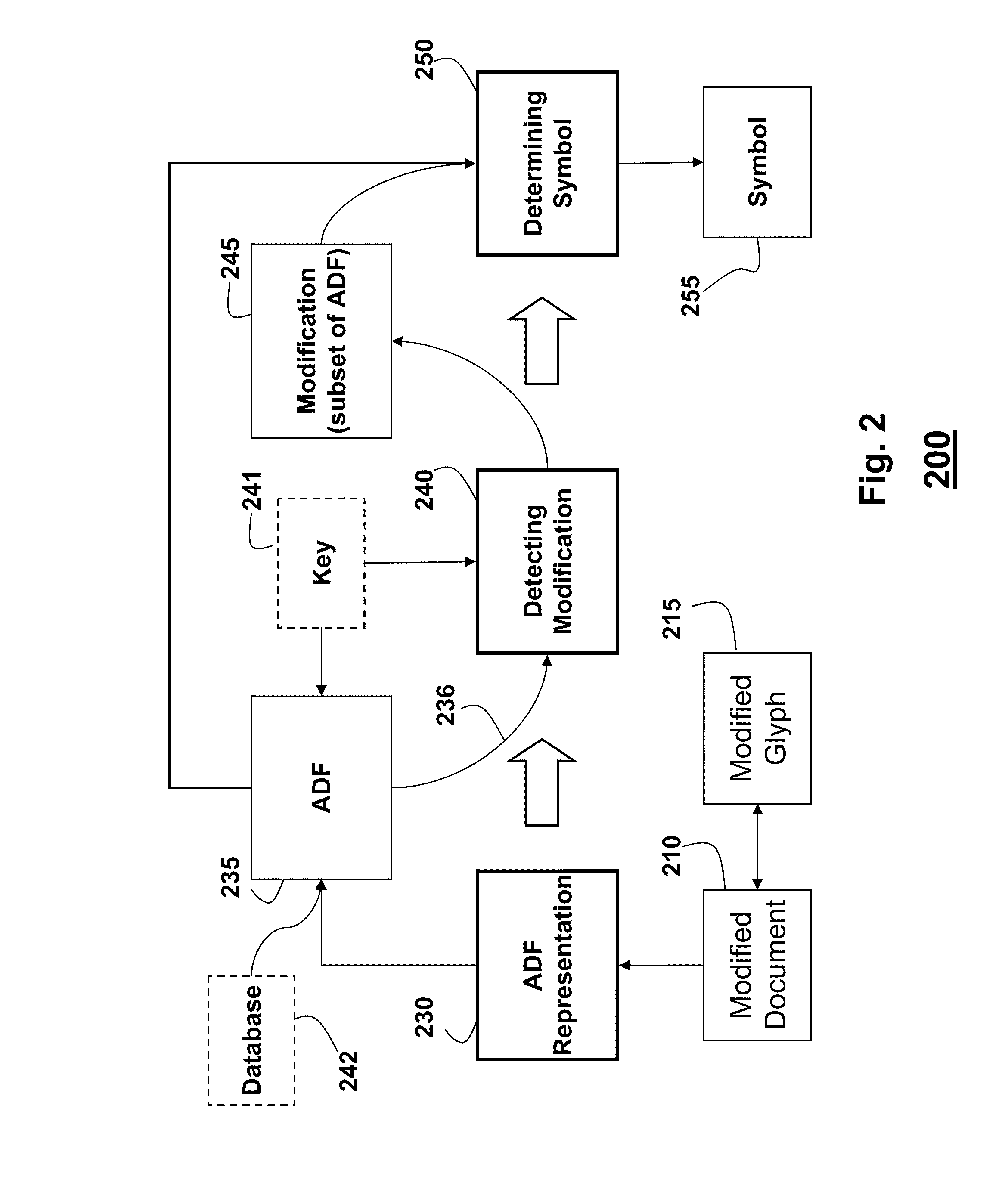Method for Embedding Messages into Documents Using Distance Fields
- Summary
- Abstract
- Description
- Claims
- Application Information
AI Technical Summary
Benefits of technology
Problems solved by technology
Method used
Image
Examples
example embodiments
Embedding Messages in Documents
[0077]FIG. 5 shows a method for embedding symbols of a message 501 into a document 502 including a set of glyphs. The glyphs in the document are represented by the ADF.
[0078]The symbols of the message are encoded 510 using an error correction code (ECC) to protect the message from intentional attacks and unintentional modifications to the document. Packetization symbols are added to enable decoding of the message in the presence of errors and noise. In the case of a printed document, errors and erasures can occur due to a physical deterioration of the document and limitations of the detector. For an electronic document, such as a portable document format (PDF) document, physical degradation or transmission errors are less likely. However, an error can still occur when the detector recovers an erroneous estimate of the embedded message. The ECC enables algebraic decoding or probabilistic (soft-decision) decoding. A convenient choice is to use Reed-Solom...
PUM
 Login to View More
Login to View More Abstract
Description
Claims
Application Information
 Login to View More
Login to View More - R&D
- Intellectual Property
- Life Sciences
- Materials
- Tech Scout
- Unparalleled Data Quality
- Higher Quality Content
- 60% Fewer Hallucinations
Browse by: Latest US Patents, China's latest patents, Technical Efficacy Thesaurus, Application Domain, Technology Topic, Popular Technical Reports.
© 2025 PatSnap. All rights reserved.Legal|Privacy policy|Modern Slavery Act Transparency Statement|Sitemap|About US| Contact US: help@patsnap.com



